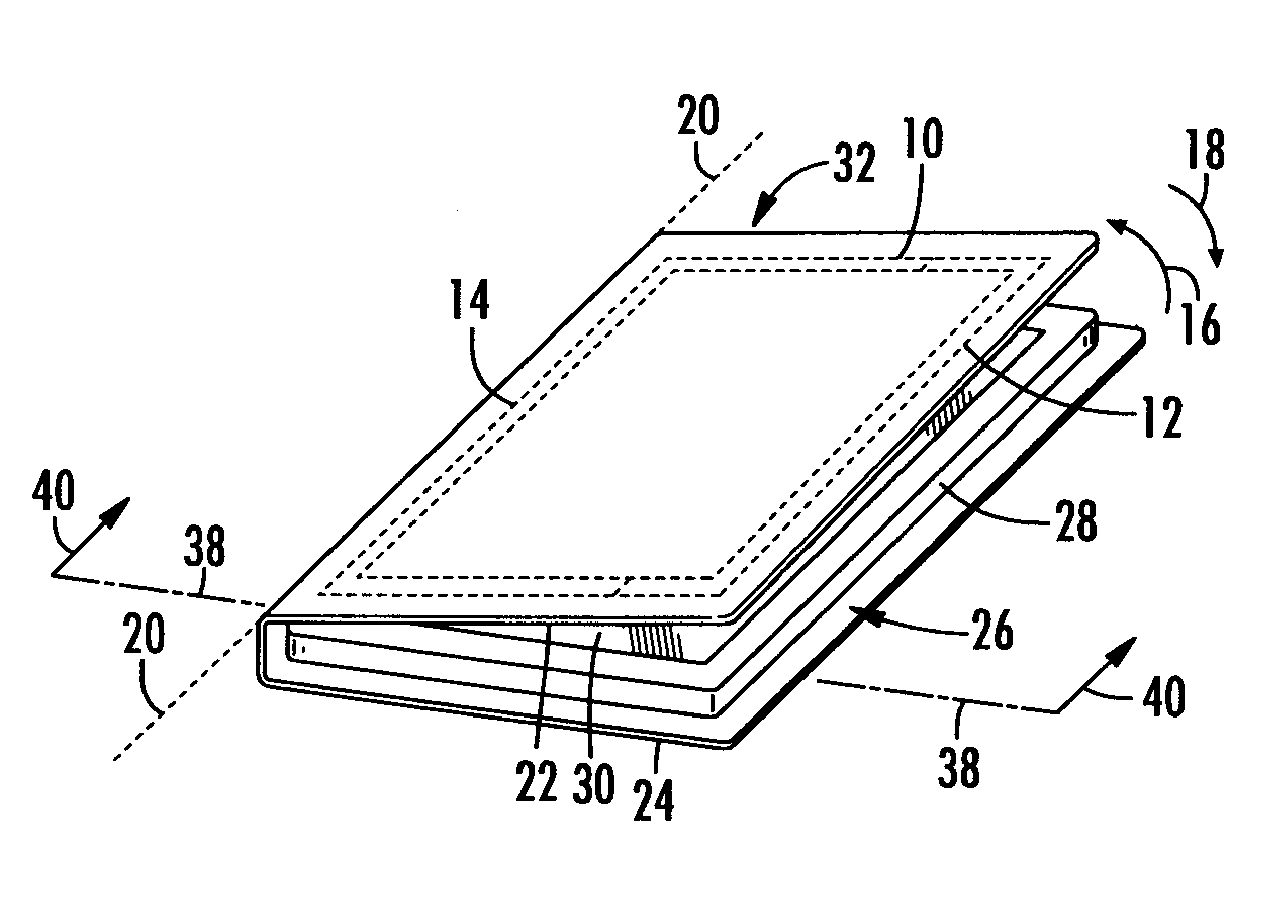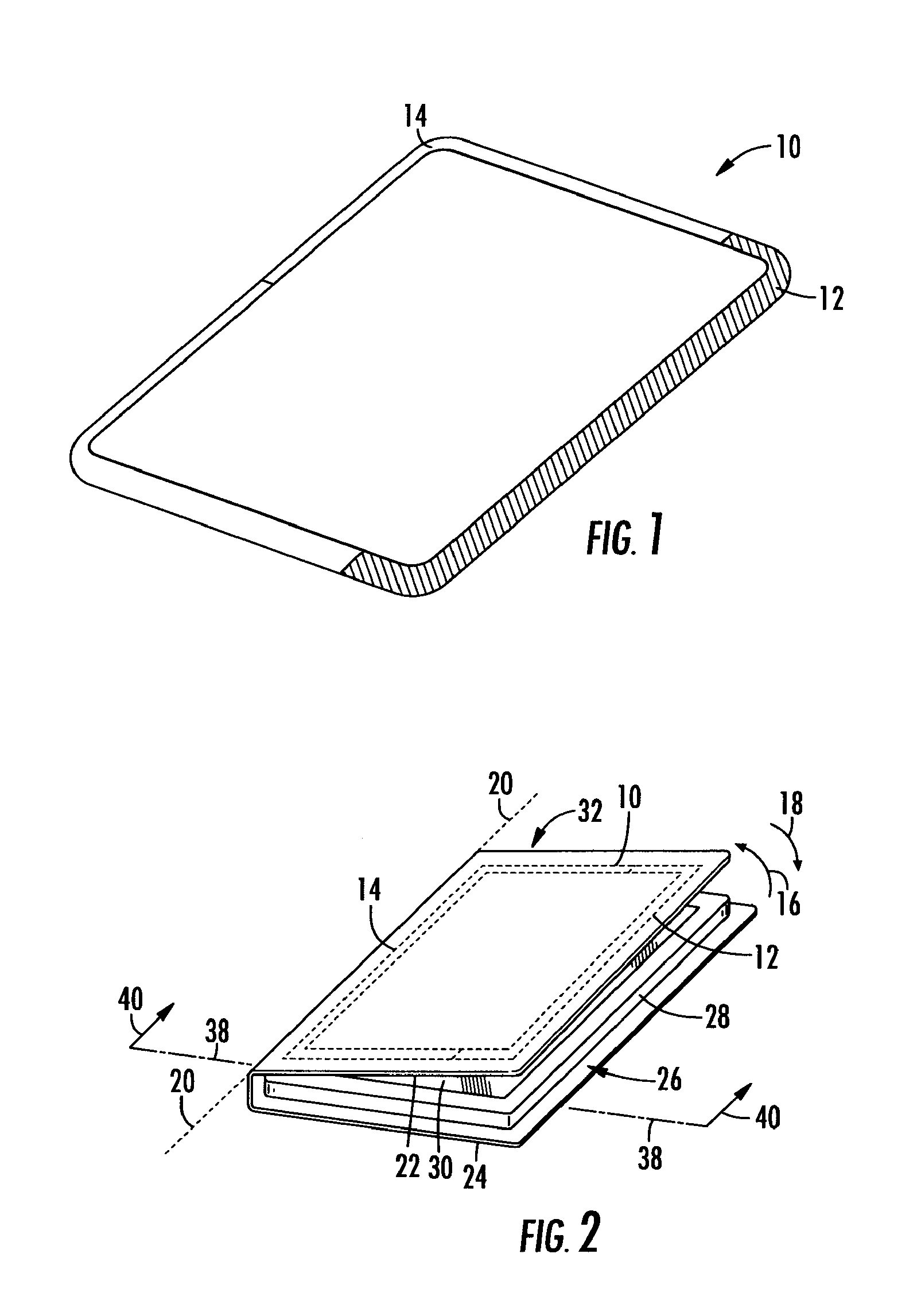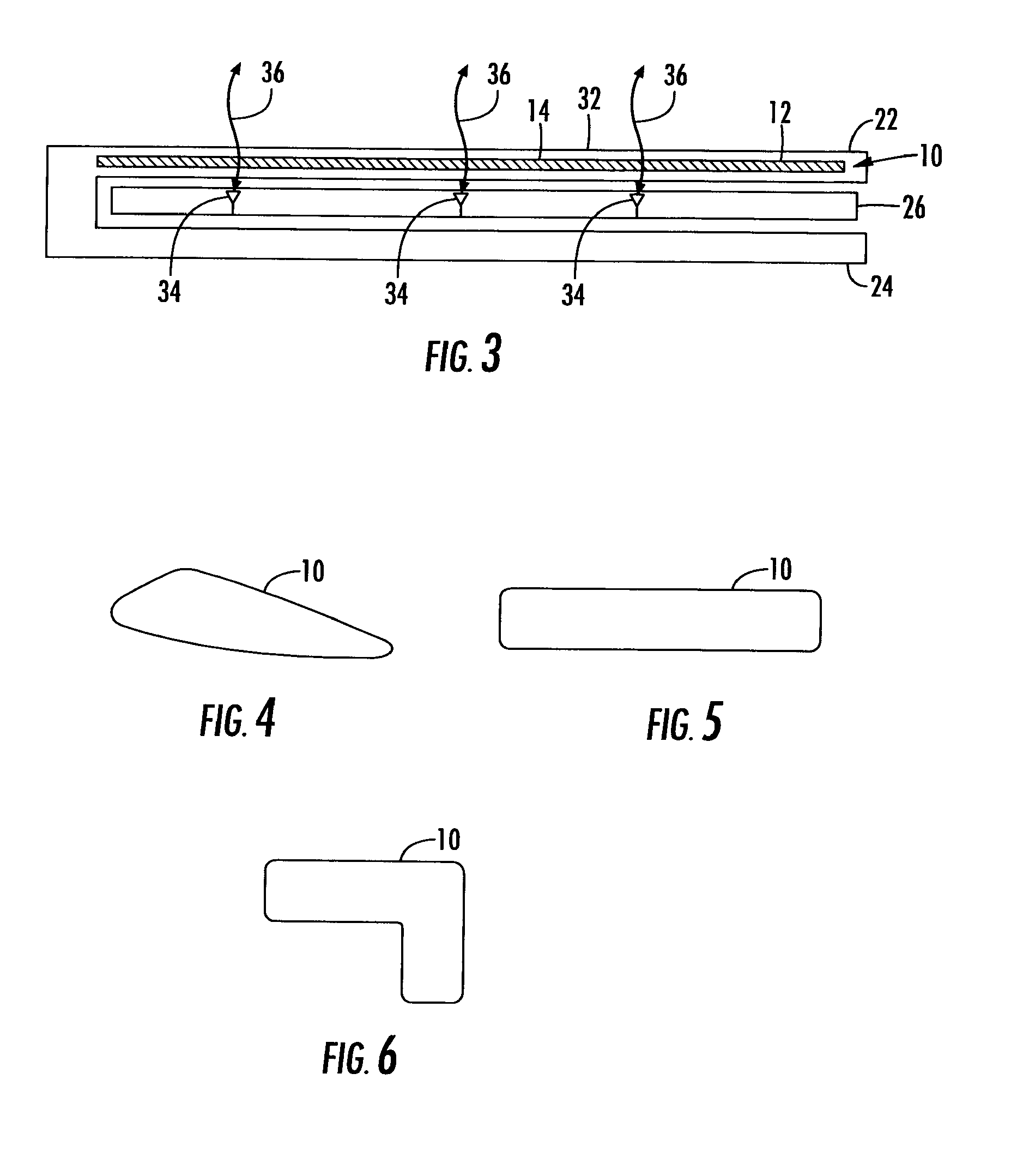Methods for forming fiber-reinforced structures with segments formed from different types of fiber
a technology of fiber reinforced plastics and segments, applied in the direction of portable computer details, instruments, shutters/movable grilles, etc., can solve the problems of insufficient rigidity of glass-fiber reinforced plastics, insufficient radio transparency of carbon fiber reinforced plastics, undesired weakness of reinforced plastics, etc., to achieve the effect of maintaining radio transparency and adding stiffness
- Summary
- Abstract
- Description
- Claims
- Application Information
AI Technical Summary
Benefits of technology
Problems solved by technology
Method used
Image
Examples
Embodiment Construction
[0018]The strength of plastic for use in electronic device housing components, support structures for covers, and other items can be enhanced by incorporating fibers into the plastic. For example, fibers can be incorporated into plastics such as epoxy resins and other polymers to enhance their strength. Examples in which fiber-reinforced plastic structures have been formed from fibers in an epoxy binder are sometimes described herein as an example. In general, any suitable type of plastic may be reinforced with fibers including plastics such as polycarbonate (PC), acrylonitrile butadiene styrene (ABS), PC / ABS blends, epoxy, etc.
[0019]An illustrative fiber-reinforced plastic structure is shown in FIG. 1. In the example of FIG. 1, fiber-reinforced plastic structure 10 has a rectangular ring shape. This is merely illustrative. Fiber-reinforced structure 10 may be formed in a circular ring, a ring having straight and curved sides, may be formed into an L-shaped bar, a straight bar, a cu...
PUM
| Property | Measurement | Unit |
|---|---|---|
| thickness | aaaaa | aaaaa |
| thickness | aaaaa | aaaaa |
| thickness | aaaaa | aaaaa |
Abstract
Description
Claims
Application Information
 Login to View More
Login to View More - R&D
- Intellectual Property
- Life Sciences
- Materials
- Tech Scout
- Unparalleled Data Quality
- Higher Quality Content
- 60% Fewer Hallucinations
Browse by: Latest US Patents, China's latest patents, Technical Efficacy Thesaurus, Application Domain, Technology Topic, Popular Technical Reports.
© 2025 PatSnap. All rights reserved.Legal|Privacy policy|Modern Slavery Act Transparency Statement|Sitemap|About US| Contact US: help@patsnap.com



